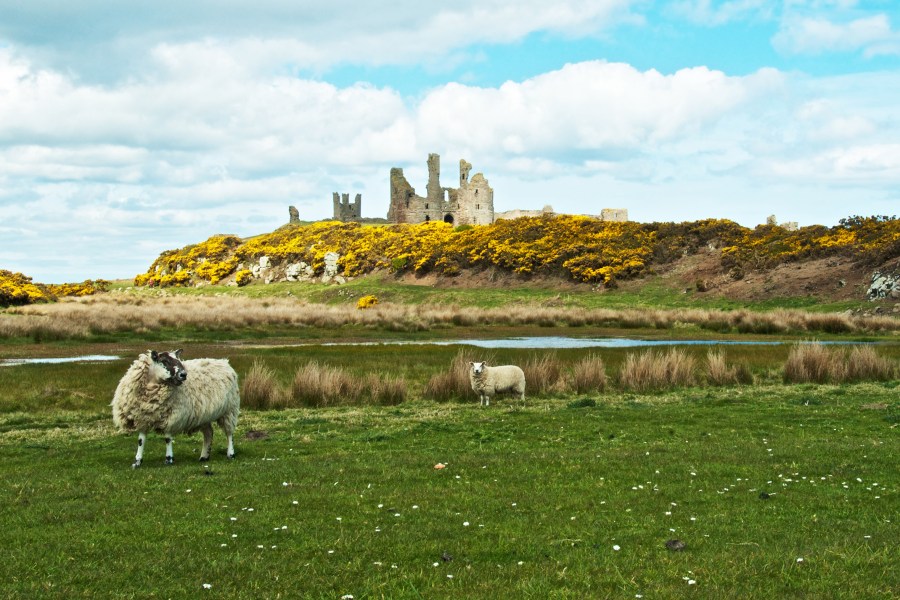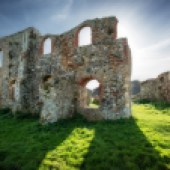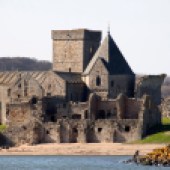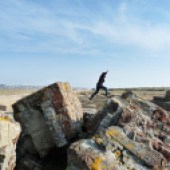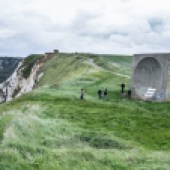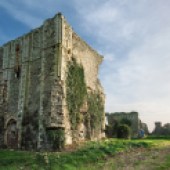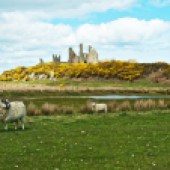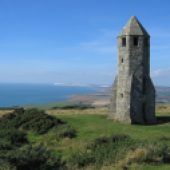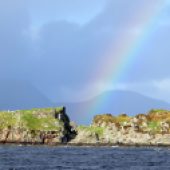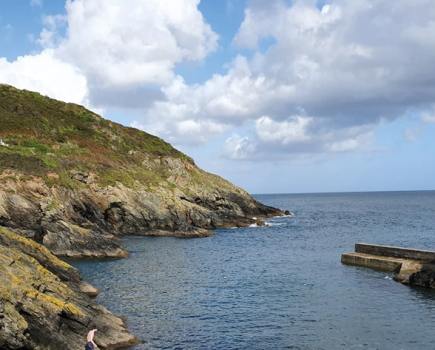Discover 8 wild ruins by the British coast, from Scotland to the Isle of Wight
Britain’s coastline is full of picturesque crumbling castles, follies and relics – you just need to know where to find them. Below, Dave Hamilton, the author of Wild Ruins reveals some of the best.
Scroll down to see the beautiful photo gallery and a special offer on the book.
GREYFRIARS FRIARY, DUNWICH, SUFFOLK
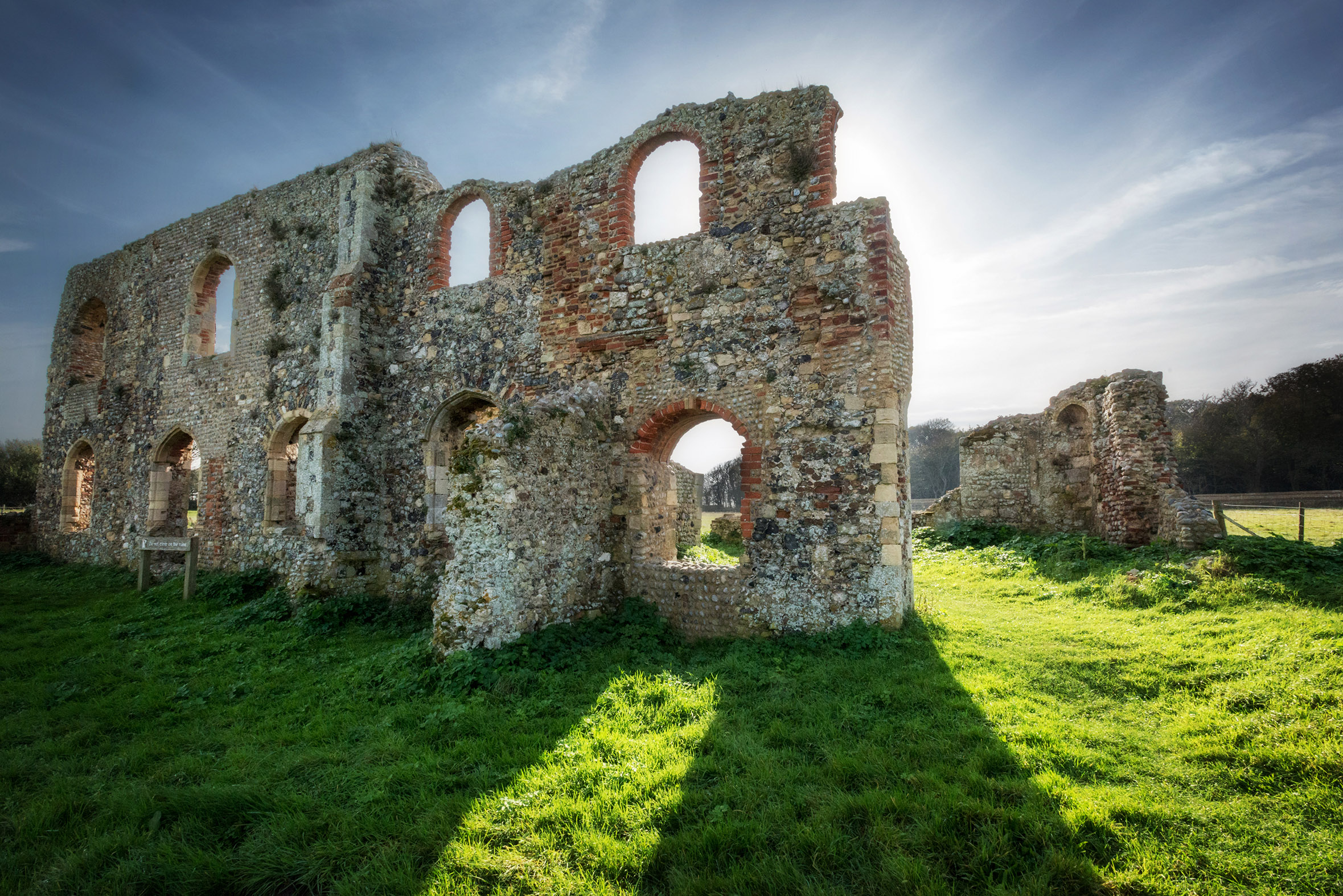

The romantic ruin of Greyfriars Friary lies just to the south east of the quaint Suffolk village of Dunwich. By the 13th century much of the town, including eight churches, had fallen into the sea. So, due to fears of further coastal erosion, the priory was moved to its present home. The remaining walls, gatehouse and cloister buildings of this are just one of the pulls to this serene and tranquil coastline. Much of the area to the south of the ruin, including the stunning heather-topped cliffs, is managed by the National Trust. It has maintained three walks in order to take in the area’s flora and fauna, where you will have a chance to see hen harriers and warblers, along with rare coastal flora.
Parking for Dunwich Heath National Trust is at post code IP17 3DJ (Latitude-Longitude 52.2522, 1.6265). The ruin is at Lat-Long 52.2755, 1.6307, postcode IP17 3DR
INCHCOLM ABBEY, NEAR SOUTH QUEENSFERRY, EDINBURGH, SCOTLAND
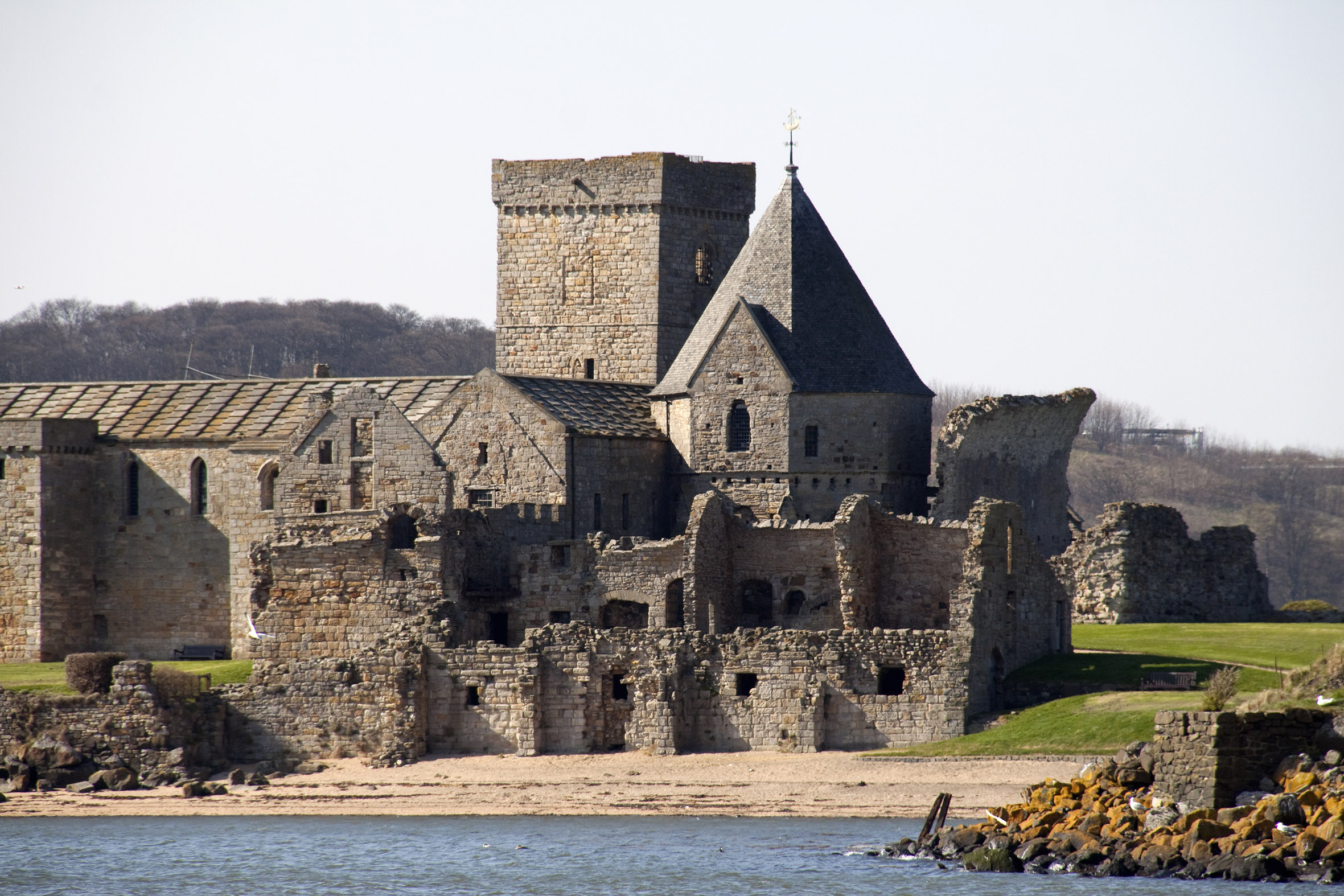

The island of Inchcolm is home to seals, seabirds and the ruins of a 13th-century abbey. It is situated in the Firth of Forth so a journey to the island is an adventure in itself. Along the way you stand a good chance of seeing puffins, porpoises and seals, along with occasional visits from dolphins who may swim alongside your boat. The island was once home to a hermit and has been inhabited for hundreds of years. The present abbey was established in 1235.
The Maid of the Forth Boat Tours (0131 3315000, maidoftheforth.co.uk) and Forth Tours (0870 1181866) take passengers on a three hour round trip into the Firth of Forth and on to Inchcolm. Prices vary and a landing pass onto Inchcolm may have to be purchased for non-members of Historic Scotland. Both depart from Hawes Pier South Queensferry.
TIDE MILLS, NEWHAVEN, EAST SUSSEX
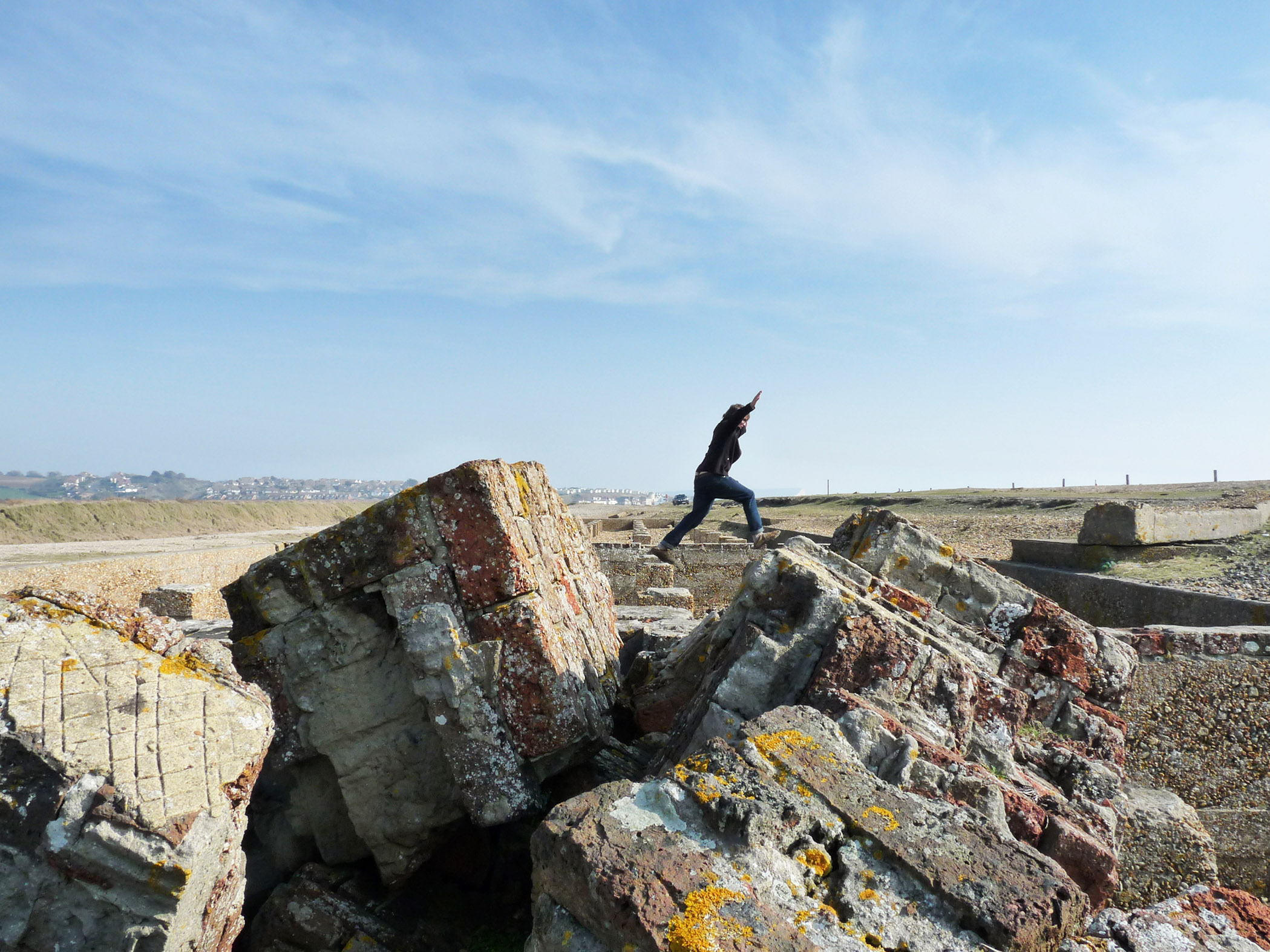

Tide Mills is a derelict coastal village in East Sussex, abandoned in the 1930s. Along with the foundations of the old hospital and scattered windswept coastal remains of homes, the ruins of the old tidal mill that gives the area its name can still be seen. It would have utilised water coming in from the sea through a sluice gate to a mill pond, and as the sea retreated the three mill wheels turned.
Tide Mills is situated off the Seaford Rd A259. Heading away from Newhaven the turning is on the right, just before the boundary sign to Seaford. There is a small height-restricted car park just off road at Latitude-Longitude 50.7824, 0.0699; postcode: BN25 2TW
SOUND MIRROR, ABBOT’S CLIFF, KENT
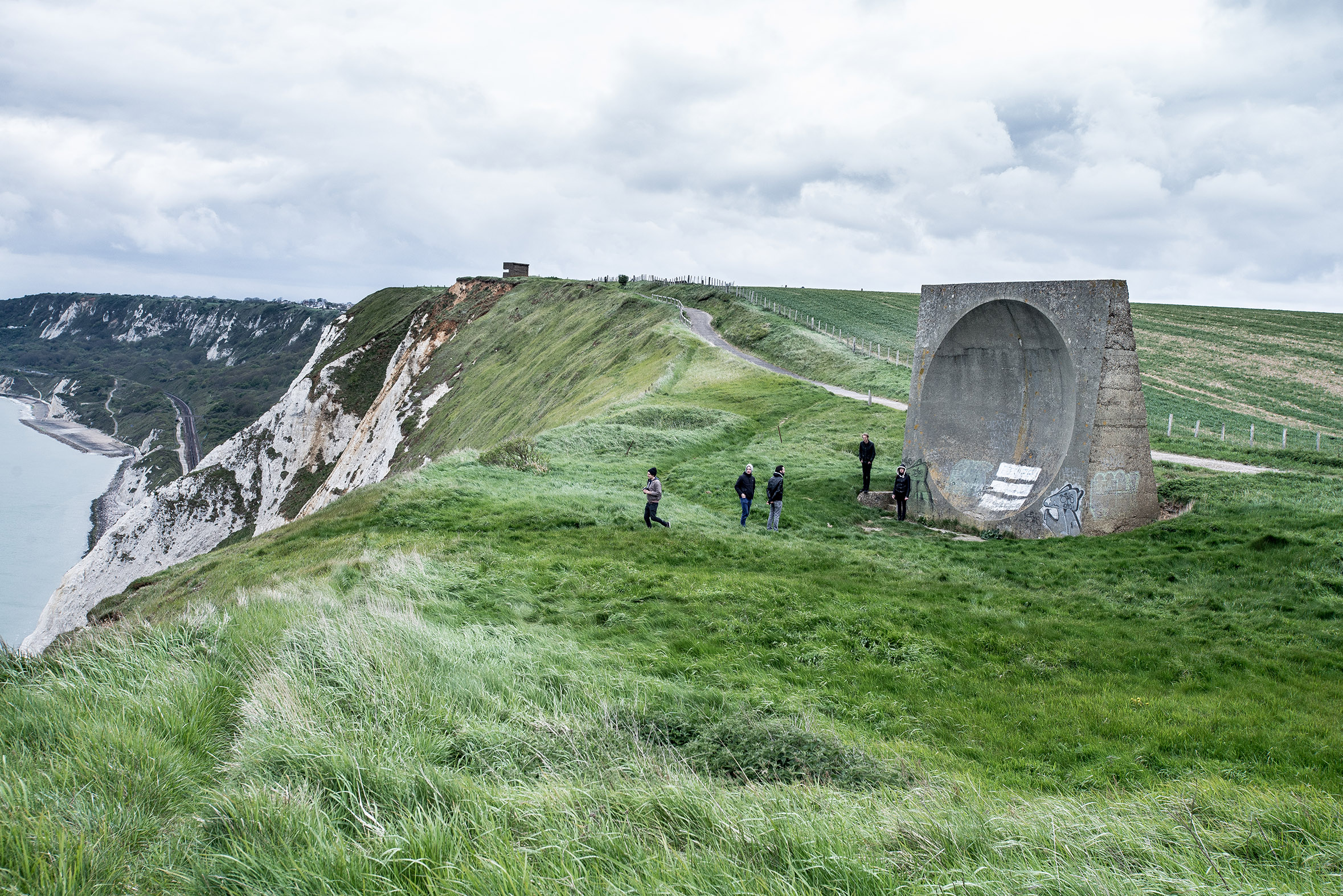

Not far from the White Cliffs of Dover, the Abbot’s Cliff sound mirror is a fantastic example of eccentric technology. Before the advent of radar, large ‘sound mirrors’ were constructed on the shores of north-east and southern Britain to warn of approaching enemy planes. There are also sound mirrors at Denge, on Romney Marsh near Dungeness, 20 miles to the west. The Romney Marsh Countryside Partnership (01797 367934) holds annual tours but they are off-limits for the rest of the year.
Park in the first lay-by at Latitude-Longitude 51.1035, 1.2369 and walk alongside road until you reach the cycle path. Take the route marked Dover for about ½ mile to Latitude-Longitude 51.1017, 1.2347; postcode: CT18 7HZ
BROMHOLM PRIORY, BACTON, NORTH NORFOLK
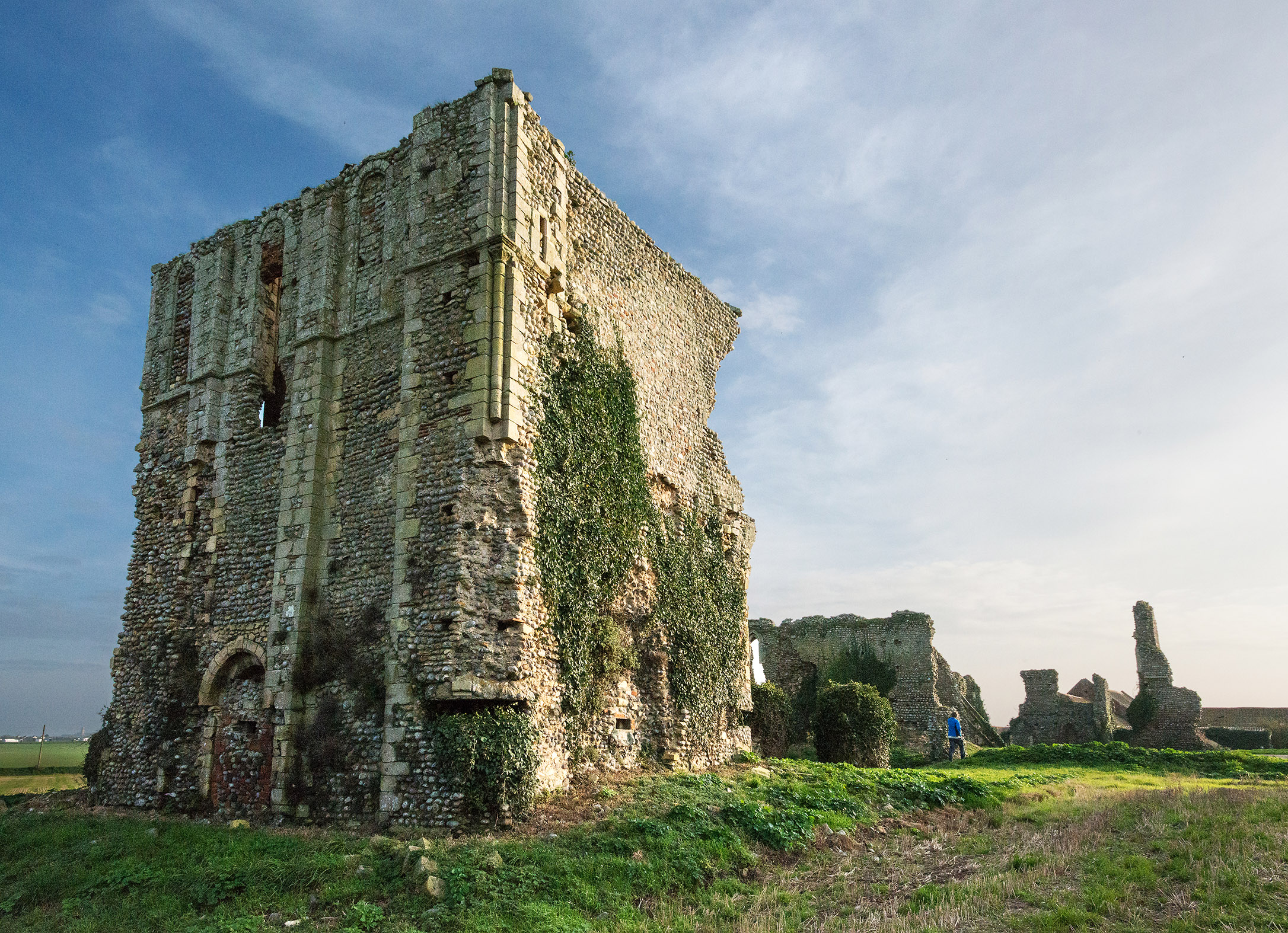

There are some ruins that really make you wonder why more hasn’t been made of them. The grand ruin of Bromholm Priory is one such building. Standing abandoned in a farmer’s field not far from the Norfolk coast, Broomholm Priory is a tragic would-be tourist attraction. Its two abandoned gatehouses are easily as impressive as some of the better-known priories in East Anglia, if not the rest of England.
Take the Walcott road through Edingthorpe Green and Broomholm village. Go past the Bacton sign and thatched white cottage taking the next right signposted Parking. Park up and head toward the Abbey Farm sign and take the footpath on the right. Half way up here you will see a gap in the hedge through which you can walk towards the priory, situated at Latitude-Longitude 52.8437, 1.4890; postcode: NR12 0HQ
DUNSTANBURGH CASTLE, NEAR CRASTER, NORTHUMBERLAND
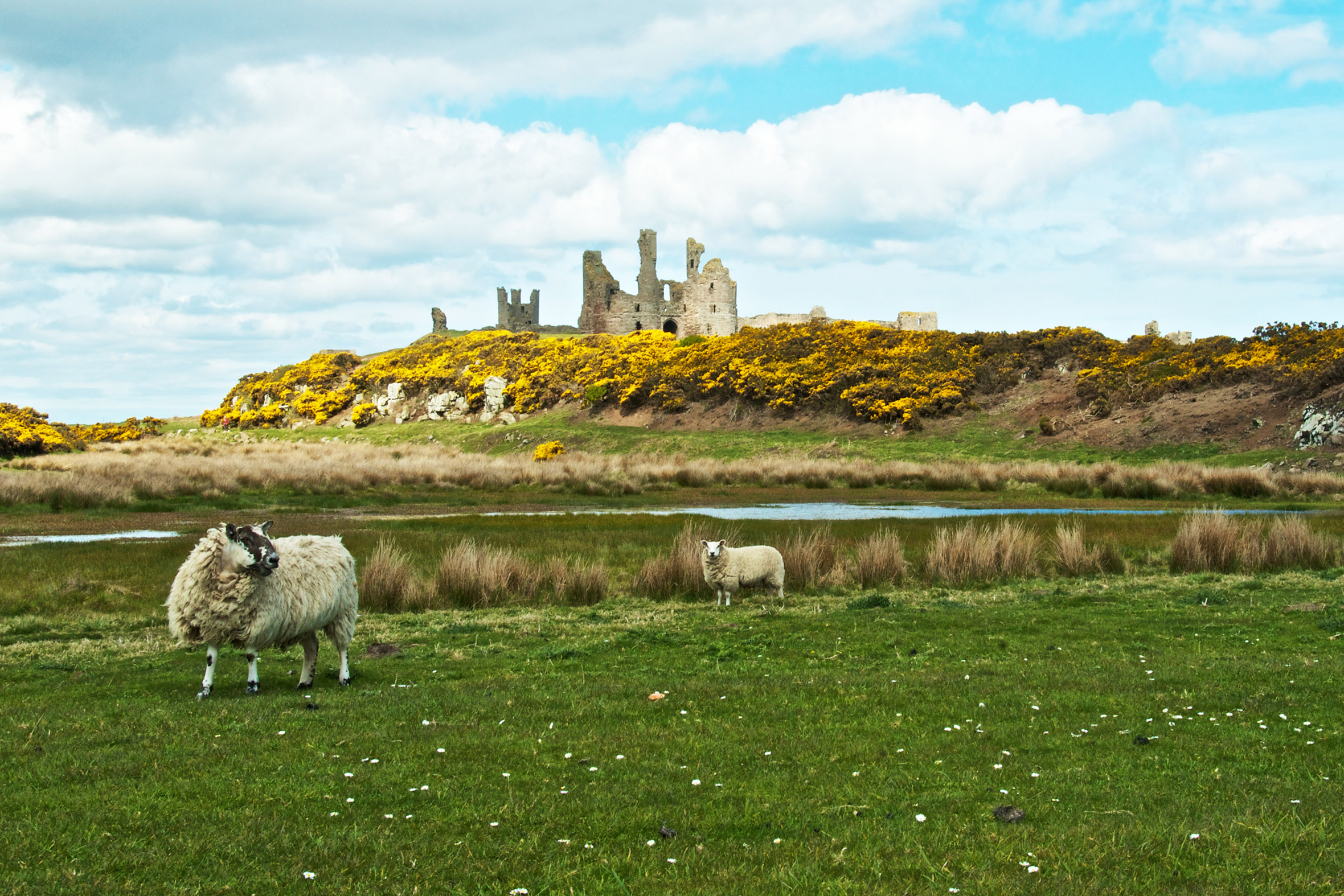

The two imposing gatehouse towers, a large curtain wall and the keep of Dunstanburgh Castle show what a formidable sight this castle must have been in its day. It is built on a remote headland on the coast, and you can climb up its stairs for wonderful views out to sea and along the picturesque coastline. Its drama was not lost on the Romantic artists, and Turner came here to paint the scene. The castle is reached on a pleasant walk from the nearby village of Craster, and on the way you’ll be rewarded with dramatic views of the magnificent ruin.
Craster is 7 miles northeast of Alnwick. Park in the village car park. Turn right out of car park, left at the coast and follow the footpath at end of the road to the castle. It’s a 20-minute easy walk to the castle at Latitude-Longitude 55.4894, -1.5951; postcode: NE66 3TT
ST CATHERINE’S ORATORY, NEAR NITON, ISLE OF WIGHT


This rocket-shaped medieval building stands on one of the highest points of the Isle of Wight. The walk up to it can be a strenuous one but the views from this hilltop are simply amazing. The story goes that a local landowner, Walter de Godeton, was forced to build the oratory as a penance for stealing wine destined for a French monastery.
The oratory is located 6 miles West of Ventnor, off the A3055. Look for the car park at Latitude-Longitude 50.5881, -1.3079. From here it’s a 10-minute strenuous walk to St Catherine’s Oratory at Latitude-Longitude 50.5931, -1.3030; postcode: PO38 2JB
DUNSCAITH CASTLE, TOKAVAIG, ISLE OF SKYE, SCOTLAND
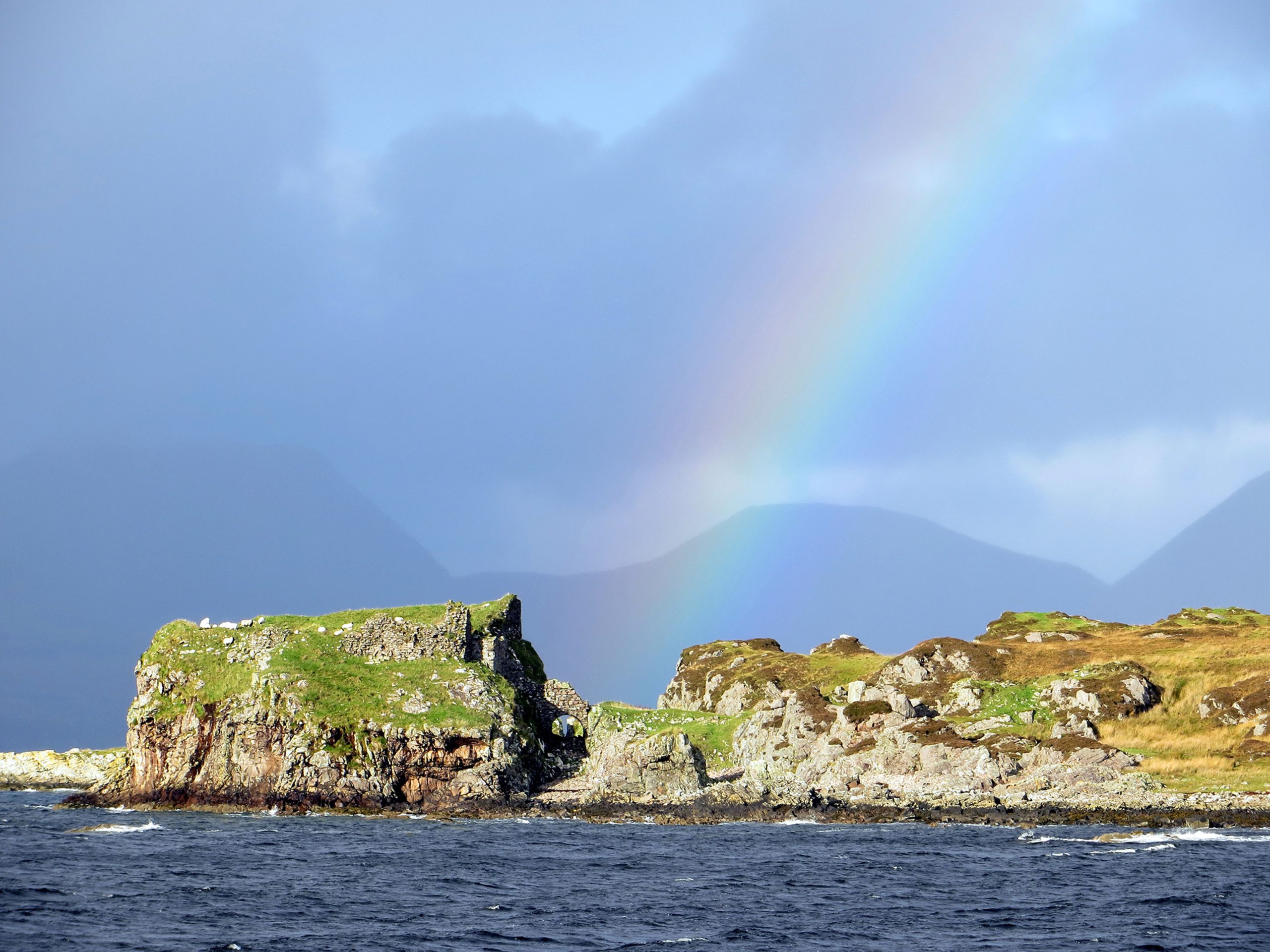

A visit to Dunscaith Castle (Dun Sgathaich in Gaelic) feels adventurous. The road leading down to the ruin is treacherous – it is single track with blind bends, and drops down to the loch. At times it feels like driving along a roller-coaster and as such cycling to the castle is advisable! You cross a rocky beach, to arrive at the ruin, entered via a tumbledown bridge with less than a foot of walkway to negotiate. The grassy interior feels safer and the views across to the islet of Eilean Ruairidh and the mountains of the Strathaird peninsula make it all worthwhile.
The castle is accessed via a looped single track road off A851 near Teangue. Latitude-Longitude 57.1365, -5.9757; postcode IV44 8QL
READER OFFER
Wild Ruins: The Explorer’s Guide to Britain’s Lost Castles, Follies, Relics and Remains by Dave Hamilton (£16.99, WildThingsPublishing) is available from all good bookshops. COAST readers can buy the book for the special price of £11.99, with free UK delivery, by ordering the book through wildthingspublishing.com and entering 'Coast' as their coupon code.
READER OFFER
coast readers can buy Wild Ruins: The Explorer’s Guide to Britain’s Lost Castles, Follies, Relics and Remains by Dave Hamilton (RRP £16.99, WildThingsPublishing) for the special price of £11.99, with free UK delivery, by ordering the book through wildthingspublishing.com and entering 'Coast' as their coupon code.
Discover 8 wild ruins by the British coast, from Scotland to the Isle of Wight
Britain’s coastline is full of picturesque crumbling castles, follies and relics – you just need to know where to find them. Below, Dave Hamilton, the author of Wild Ruins reveals some of the best.
Scroll down to see the beautiful photo gallery and a special offer on the book.
GREYFRIARS FRIARY, DUNWICH, SUFFOLK


The romantic ruin of Greyfriars Friary lies just to the south east of the quaint Suffolk village of Dunwich. By the 13th century much of the town, including eight churches, had fallen into the sea. So, due to fears of further coastal erosion, the priory was moved to its present home. The remaining walls, gatehouse and cloister buildings of this are just one of the pulls to this serene and tranquil coastline. Much of the area to the south of the ruin, including the stunning heather-topped cliffs, is managed by the National Trust. It has maintained three walks in order to take in the area’s flora and fauna, where you will have a chance to see hen harriers and warblers, along with rare coastal flora.
Parking for Dunwich Heath National Trust is at post code IP17 3DJ (Latitude-Longitude 52.2522, 1.6265). The ruin is at Lat-Long 52.2755, 1.6307, postcode IP17 3DR
INCHCOLM ABBEY, NEAR SOUTH QUEENSFERRY, EDINBURGH, SCOTLAND


The island of Inchcolm is home to seals, seabirds and the ruins of a 13th-century abbey. It is situated in the Firth of Forth so a journey to the island is an adventure in itself. Along the way you stand a good chance of seeing puffins, porpoises and seals, along with occasional visits from dolphins who may swim alongside your boat. The island was once home to a hermit and has been inhabited for hundreds of years. The present abbey was established in 1235.
The Maid of the Forth Boat Tours (0131 3315000, maidoftheforth.co.uk) and Forth Tours (0870 1181866) take passengers on a three hour round trip into the Firth of Forth and on to Inchcolm. Prices vary and a landing pass onto Inchcolm may have to be purchased for non-members of Historic Scotland. Both depart from Hawes Pier South Queensferry.
TIDE MILLS, NEWHAVEN, EAST SUSSEX


Tide Mills is a derelict coastal village in East Sussex, abandoned in the 1930s. Along with the foundations of the old hospital and scattered windswept coastal remains of homes, the ruins of the old tidal mill that gives the area its name can still be seen. It would have utilised water coming in from the sea through a sluice gate to a mill pond, and as the sea retreated the three mill wheels turned.
Tide Mills is situated off the Seaford Rd A259. Heading away from Newhaven the turning is on the right, just before the boundary sign to Seaford. There is a small height-restricted car park just off road at Latitude-Longitude 50.7824, 0.0699; postcode: BN25 2TW
SOUND MIRROR, ABBOT’S CLIFF, KENT


Not far from the White Cliffs of Dover, the Abbot’s Cliff sound mirror is a fantastic example of eccentric technology. Before the advent of radar, large ‘sound mirrors’ were constructed on the shores of north-east and southern Britain to warn of approaching enemy planes. There are also sound mirrors at Denge, on Romney Marsh near Dungeness, 20 miles to the west. The Romney Marsh Countryside Partnership (01797 367934) holds annual tours but they are off-limits for the rest of the year.
Park in the first lay-by at Latitude-Longitude 51.1035, 1.2369 and walk alongside road until you reach the cycle path. Take the route marked Dover for about ½ mile to Latitude-Longitude 51.1017, 1.2347; postcode: CT18 7HZ
BROMHOLM PRIORY, BACTON, NORTH NORFOLK


There are some ruins that really make you wonder why more hasn’t been made of them. The grand ruin of Bromholm Priory is one such building. Standing abandoned in a farmer’s field not far from the Norfolk coast, Broomholm Priory is a tragic would-be tourist attraction. Its two abandoned gatehouses are easily as impressive as some of the better-known priories in East Anglia, if not the rest of England.
Take the Walcott road through Edingthorpe Green and Broomholm village. Go past the Bacton sign and thatched white cottage taking the next right signposted Parking. Park up and head toward the Abbey Farm sign and take the footpath on the right. Half way up here you will see a gap in the hedge through which you can walk towards the priory, situated at Latitude-Longitude 52.8437, 1.4890; postcode: NR12 0HQ
DUNSTANBURGH CASTLE, NEAR CRASTER, NORTHUMBERLAND


The two imposing gatehouse towers, a large curtain wall and the keep of Dunstanburgh Castle show what a formidable sight this castle must have been in its day. It is built on a remote headland on the coast, and you can climb up its stairs for wonderful views out to sea and along the picturesque coastline. Its drama was not lost on the Romantic artists, and Turner came here to paint the scene. The castle is reached on a pleasant walk from the nearby village of Craster, and on the way you’ll be rewarded with dramatic views of the magnificent ruin.
Craster is 7 miles northeast of Alnwick. Park in the village car park. Turn right out of car park, left at the coast and follow the footpath at end of the road to the castle. It’s a 20-minute easy walk to the castle at Latitude-Longitude 55.4894, -1.5951; postcode: NE66 3TT
ST CATHERINE’S ORATORY, NEAR NITON, ISLE OF WIGHT
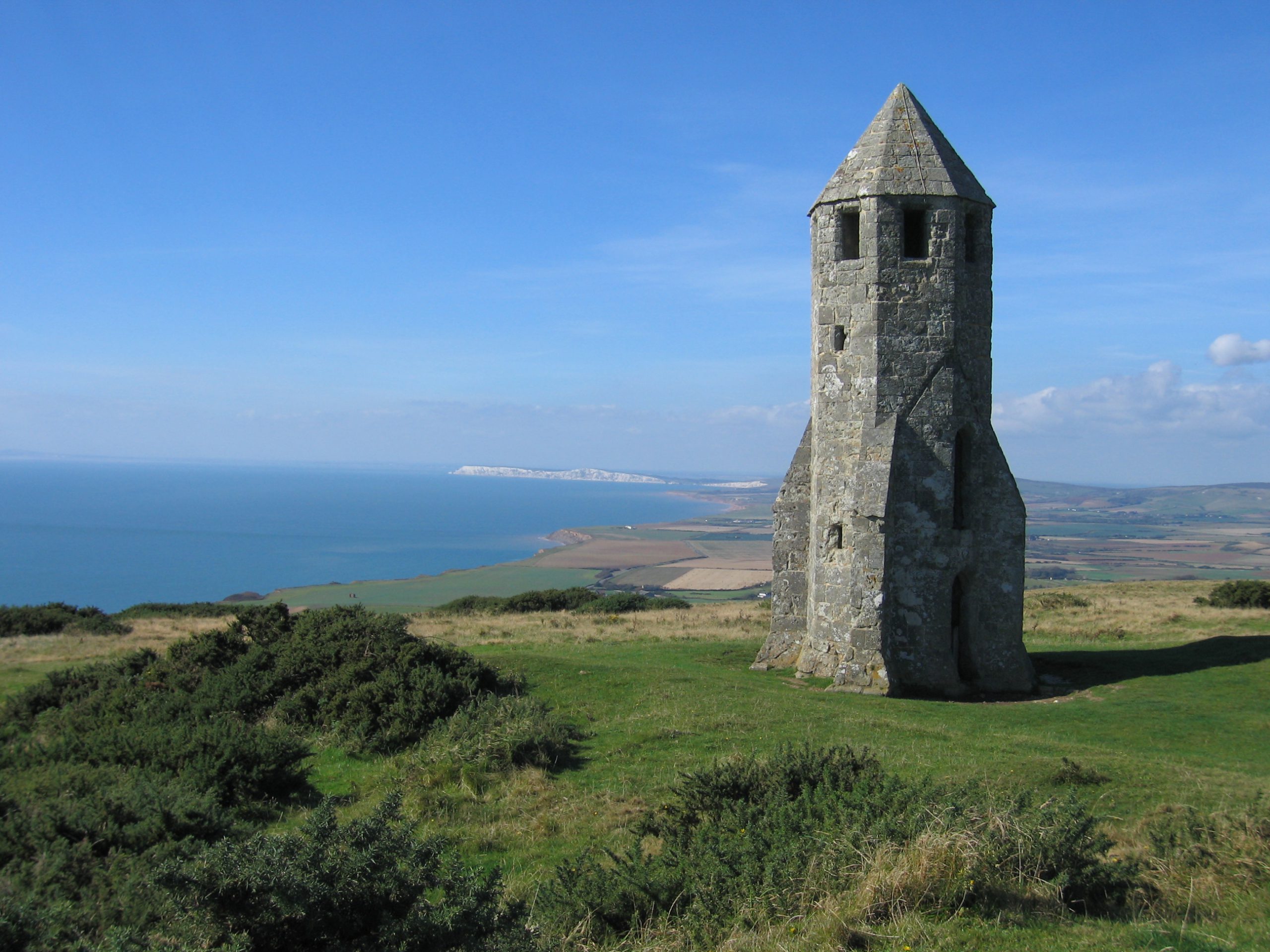

This rocket-shaped medieval building stands on one of the highest points of the Isle of Wight. The walk up to it can be a strenuous one but the views from this hilltop are simply amazing. The story goes that a local landowner, Walter de Godeton, was forced to build the oratory as a penance for stealing wine destined for a French monastery.
The oratory is located 6 miles West of Ventnor, off the A3055. Look for the car park at Latitude-Longitude 50.5881, -1.3079. From here it’s a 10-minute strenuous walk to St Catherine’s Oratory at Latitude-Longitude 50.5931, -1.3030; postcode: PO38 2JB
DUNSCAITH CASTLE, TOKAVAIG, ISLE OF SKYE, SCOTLAND


A visit to Dunscaith Castle (Dun Sgathaich in Gaelic) feels adventurous. The road leading down to the ruin is treacherous – it is single track with blind bends, and drops down to the loch. At times it feels like driving along a roller-coaster and as such cycling to the castle is advisable! You cross a rocky beach, to arrive at the ruin, entered via a tumbledown bridge with less than a foot of walkway to negotiate. The grassy interior feels safer and the views across to the islet of Eilean Ruairidh and the mountains of the Strathaird peninsula make it all worthwhile.
The castle is accessed via a looped single track road off A851 near Teangue. Latitude-Longitude 57.1365, -5.9757; postcode IV44 8QL
READER OFFER
Wild Ruins: The Explorer’s Guide to Britain’s Lost Castles, Follies, Relics and Remains by Dave Hamilton (£16.99, WildThingsPublishing) is available from all good bookshops. COAST readers can buy the book for the special price of £11.99, with free UK delivery, by ordering the book through wildthingspublishing.com and entering 'Coast' as their coupon code.
READER OFFER
coast readers can buy Wild Ruins: The Explorer’s Guide to Britain’s Lost Castles, Follies, Relics and Remains by Dave Hamilton (RRP £16.99, WildThingsPublishing) for the special price of £11.99, with free UK delivery, by ordering the book through wildthingspublishing.com and entering 'Coast' as their coupon code.

